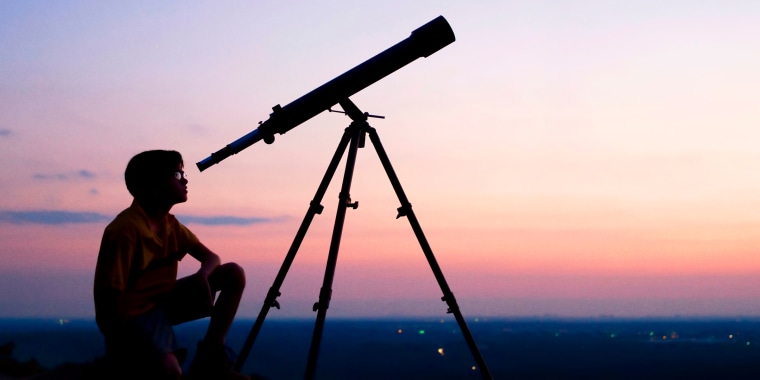

It’s also battery-powered, so you'll always want to keep a set of spares on hand when out in the field. "Both large binoculars and image-stabilized binoculars can get mighty expensive, but their performance is mighty impressive," says Fienberg. The downside to the image-stabilizing technology is that it's expensive.

(Although if it's raining, you probably won't be able to do much stargazing!) If that weren't enough, these binoculars are pretty hardy - they're waterproof, too. And though the image stabilizer means you don't technically need a tripod to keep things sturdy, there is a built-in tripod thread, so you can easily mount it if your arms get tired. That 10x magnification is great for viewing the moon, galaxies, and star clusters, while the 42-millimeter objective lens diameter is large enough to let enough light in from dark skies. Specs-wise, the binoculars also have some pretty ideal numbers for stargazing. It can be hard to hold binoculars still enough to get a good view of celestial objects, but that's not an issue with this pair, since it has gyroscope motion sensors that keep your view nearly completely still. This is the best handheld stargazing binoculars money can buy, and it all comes down to the image stabilizer. What to Consider: They are extremely expensive. Why We Love It: They have an optical image stabilizer to keep your view sharper than ever. However, beginners and more budget-conscious stargazers may prefer one of over less expensive picks. Our favorite stargazing binocular is the Canon 10x42L IS WP, which has an image stabilizer to keep your view perfectly crisp, even if your hands are a bit wobbly. That's why we're helping narrow down the options based on magnification, objective lens diameter, eye relief, weight, and tripod adaptable - the major components you should consider in a pair of binoculars. And because they're often smaller, lighter, and more durable than telescopes, they’re much easier to carry around.Īs highly technical devices, binoculars can be a bit confusing for shoppers looking to buy their first pair. Richard Tresch Fienberg, senior contributing editor of Sky & Telescope and senior advisor to the executive officer of the American Astronomical Society.īinoculars are typically easier to use than telescopes since they make use of both eyes instead of one. "A common saying among amateur astronomers is, 'Binoculars are the best first telescope.' They can show you so much!" says astronomer Dr. And while telescopes are fantastic tools for astronomers, binoculars can also be a great option, especially for novice astronomers and travelers. When you think of stargazing, it's likely that you'll picture peering through a telescope at the night sky.


 0 kommentar(er)
0 kommentar(er)
